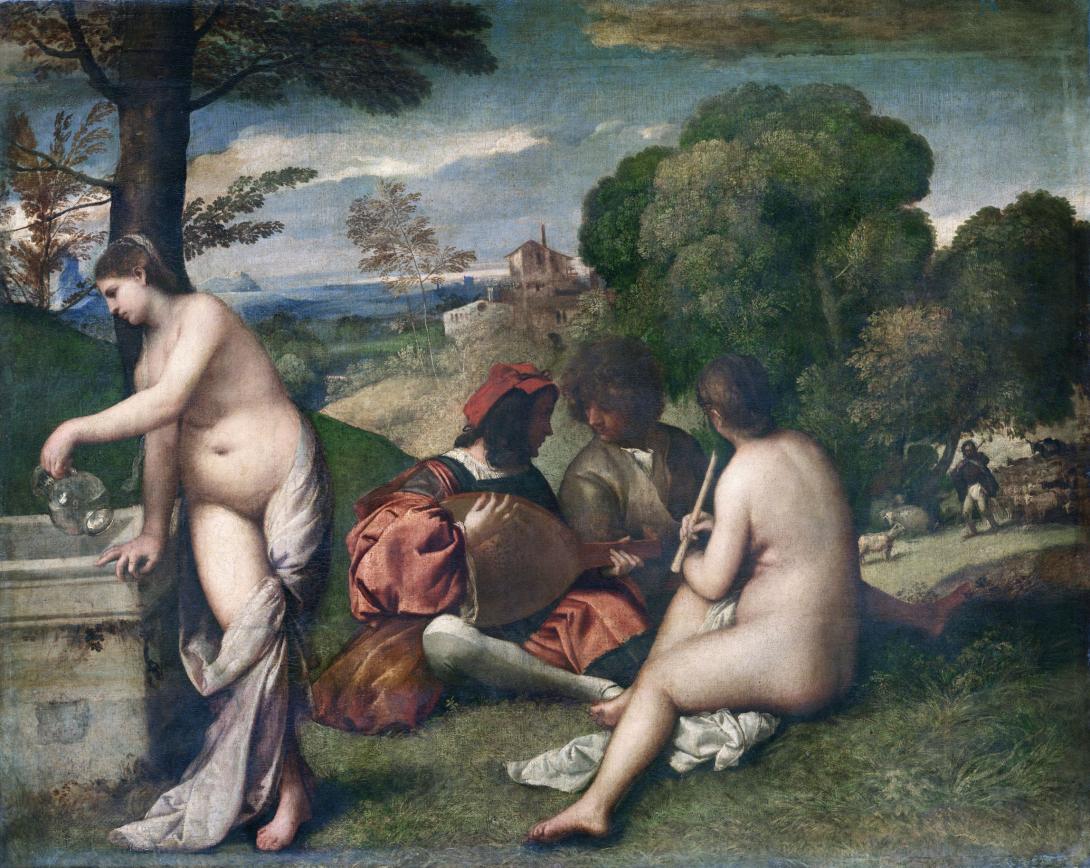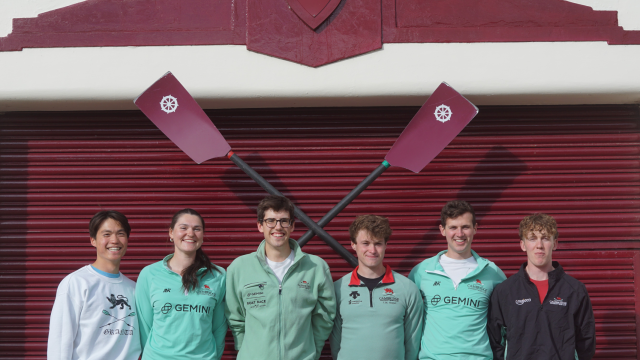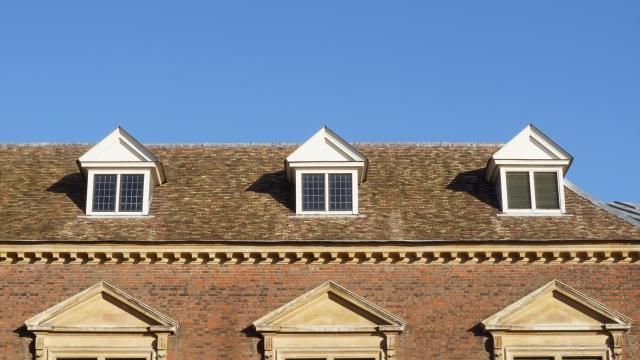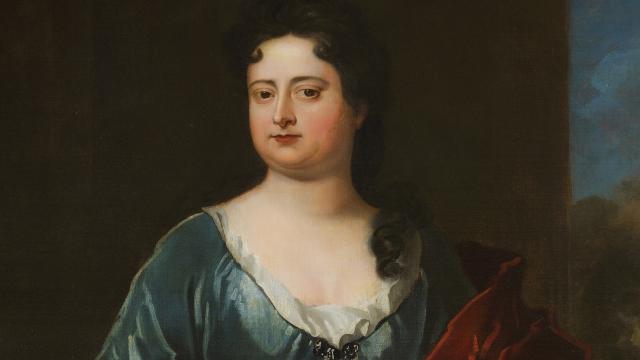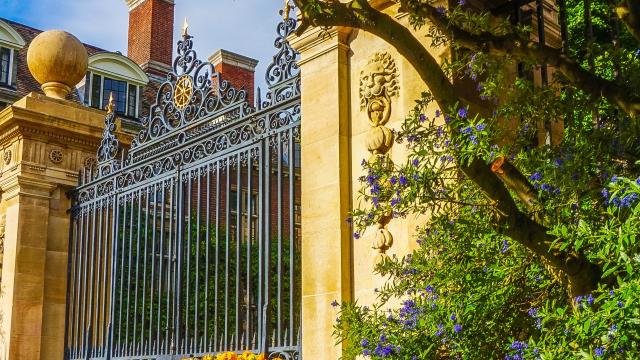
Fergus McGhee (2020), a Junior Research Fellow in English at St Catharine’s, has been awarded the inaugural Richard D. Gooder Prize for his essay on the Victorian painter and poet Dante Gabriel Rossetti. The prize, aimed at doctoral students and early career researchers, was established in memory of one of the founding editors of the scholarly journal The Cambridge Quarterly, and is awarded for an essay in any field which explores the relationship between different art forms.
Fergus’s article offers a fresh perspective on nineteenth-century aesthetics by way of an intricate close reading of Rossetti’s 1849 sonnet “For a Venetian Pastoral, by Giorgione; in the Louvre”. The poem is a response to one of the most highly prized and enigmatic paintings of the Italian Renaissance, the Concert Champêtre (then thought to be by the Venetian artist Giorgione, now generally attributed to his pupil Titian). The subject of the painting – whether allegorical, literary, or more personal – has long eluded identification. In the nineteenth century, however, this lack of clear moral or iconographic content was increasingly revalued for its ability to arouse an intimate and evocative atmosphere of “lyrical” reverie. He explains:
“Victorian poets have often been faulted for producing vague atmospheric effects at the expense of clarity and precision of feeling and imagery. But a wide range of Victorian writers thought very precisely indeed about the possible virtues of vagueness as an artistic resource. Though vagueness in a painting or poem may simply be sloppy or muddle-headed, when skilfully handled it can be a keen-edged tool of artistic intelligence: a gateway into rich and roving paths of reflection and suggestion. Rather than shrivelling up into a bundle of more or less easily grasped meanings that you can take away with you, poems like Rossetti’s glow with the sense of perpetual challenge and invitation which he found in Titian’s painting.”
Fergus’s article relates Rossetti’s poetry to the Renaissance concept of vaghezza, which binds together notions of indefinability, visual beauty, movement and desire. The single most important source for early modern understandings of this elusive quality was Agnolo Firenzuola’s dialogue On the Beauty of Women (1548), which Rossetti owned. Drawing on the works of Dante, Petrarch and Boccaccio, Firenzuola framed vaghezza in relation to two cognate verbs – vagare (to wander) and vagheggiare (to gaze fondly upon, or yearn for) – characterising it as a form of sensuous beauty that inspired a pleasurable mental restlessness. Subsequently adopted into art criticism, the ideal of vaghezza endured into the nineteenth century in the poetry of Giacomo Leopardi in Italy and Rossetti in England, and through him went on to influence the wider Aesthetic movement.
The judges received a large number of entries and noted that the quality was exceptionally high, but said that Fergus’s essay stood out for the “assurance and elegance of the writing, the return to an ‘old’ discussion of Pater, Rossetti and Aestheticism with new, surprising and fresh insights to bring to bear, and the conceptual sophistication of its thinking about ekphrasis (the verbal description of visual art)”.
“Rossetti’s Giorgione and the Victorian ‘Cult of Vagueness’” is free to read online.
